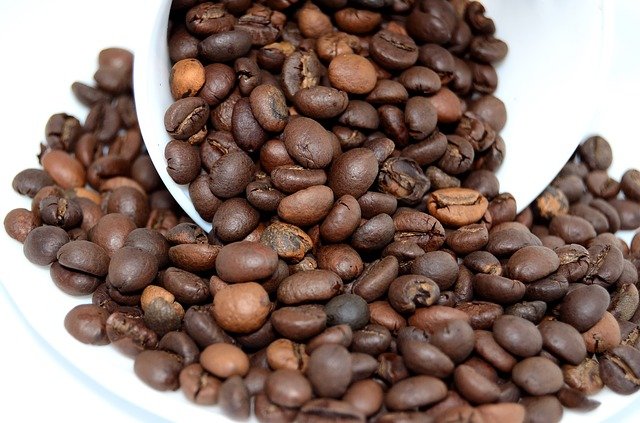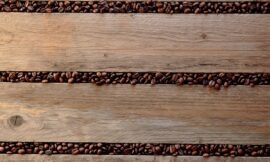COFFEE BREWING METHODS
Following on from our last chapter, we took a look at the whole coffee manufacturing process, from the plucking of coffee cherries through the roasting and storage of roasted beans. In this chapter, we will look at the brewing process that is involved in the preparation of coffee, as well as how this procedure might affect the final drink product that you consume.
The following information regarding the coffee brewing process will be covered in this chapter:
Coffee Grinding Methods and Types of Bean Grinds Coffee Brewing Methods and Techniques
BEANS FOR GRINDING
A basic bean grinder is the first thing that comes to mind when thinking about grinding methods. However, most people do not realize that there are really two kinds of bean grinders, in addition to the mortar and pestle grinding technique.
The mortar and pestle technique is the least popular of the three kinds of grinding procedures since it requires the most effort.
This process entails crushing coffee seeds using a pestle and mortar before brewing them with water. Burr grinders and blade grinders are the kind of grinders that are most typically used. Burr grinders use rotating components to shear coffee seeds into powder. Blade grinders cut coffee seeds rather than shear them, and they do this by the use of a series of spinning blades that rotate swiftly. The blade type of grinder is the most common kind of grinder found in households throughout the United States.
DIFFERENT KINDS OF BEAN GRIND
No matter whether you are grinding your own beans or purchasing beans that have already been ground, it is vital to understand the sort of brewing process that you will be using. In order to make a high-quality cup of coffee, various coffee brewing processes need the use of different kinds of bean grind.
The extra coarse grind is the coarsest of all the coffee bean grinds. This kind of grind is utilized in cold coffee brewing equipment, as the name implies. The coarse grind is the second greatest grind after the fine grind. When it comes to cupping and the French Press brewing technique, coarse coffee grinds are employed most often. The medium-coarse grind is the next level down on the grind size scale.
Both café solo and chemex brewers employ this sort of grind, which is a finer version of the previous one. The medium grind is the next step after the medium-coarse grind. Due to the fact that it is intended for drip pots, medium grind is the most usually utilized grind. The medium-fine grind falls within the category of medium grind. This finer grind is used in vacuum coffee pots, pourover cones, and siphon coffee makers, among other devices. The fine grind is the second finest coffee grind available, after the fine grind.
Fine grind coffee is popular since it is the ideal grind for espresso as well as stovetop espresso brewing, which is why many people use it. The extremely fine grind is the last form of coffee grind to be discussed. Turkish coffee is made with an incredibly fine grind of coffee, which is used for the preparation.
How is it possible that there are so many different types of coffee grind when there are so few techniques of grinding coffee beans? Despite the fact that there are just a few techniques of grinding coffee beans, there are a plethora of different types of grinding equipment available. The most costly grinders include multi-level grinding settings, which use the main grinding procedures to produce a range of grinding coarsenesses that are distinct from one another.
In addition, if you are committed to a certain grind type, you may invest in a grinder that is made particularly for that grind type. Quality grinders may cost anywhere from $50 to as much as $300, depending on their features. Although you are not required to buy the most costly grinder available, it is recommended that you avoid choosing the lowest grinder available! In most cases, cheap grinders only have one setting that is meant for drip brewers, and like with other inexpensive equipment, they do not last very long.
The Origins of Coffee Health benefits and risks of drinking coffee PROCESSING COFFEE BEANS The Supposed Miraculous Properties of CoffeeCOFFEE BREWING METHODS
20 Amazing Ways To Be A Better Girlfriend 10 Key Signs That God Wants You To Remain SingleMETHODS FOR BREWING COFFEE
With in previous paragraph, we discussed the many varieties of coffee bean grinds available. When producing coffee, the kind of brewing technique that is used determines the amount of grinds that are required. While some of the brewing processes outlined may have been known to you, others may have been unfamiliar to you at the time of reading this article. The techniques of brewing discussed in this section will be examined in more detail later on.
BREWING AT ROOM TEMPERATURE
There are a variety of pricey devices available that enable you to create your own cold brewed coffee, or you may make it yourself using a pitcher and some water. Regardless of whatever method you choose to prepare your cold brewed coffee, you will always end up with a cold coffee drink that has been made with the coarsest grind of coffee available.
It is less acidic than hot brewed coffee, which makes it a popular choice among individuals who like coffee but find hot coffee to be too much for them to take.
Cold brewed coffee is also less expensive than hot brewed coffee. Cold brewing coffee, on the other hand, necessitates allowing the coffee to brew for around 12 hours with each pot in order to have a fully flavored cup, which might be troublesome for certain people who work on the go.
Cold brewed coffee has a number of advantages over hot brewed coffee, the most notable of which is that it does not need fresher beans. While it is true that the fresher the beans, the greater the flavor, older beans may still yield a good drink when brewed in the cold brew technique of brewing.
THE FRANCE PRESS
The French press is a piece of coffee-making equipment that is well-known among coffee enthusiasts. The little coffee pot (also known as a French press) is often constructed of glass or plastic type material, and it has a mesh plunger as its main component. The plunger lets you to prepare your coffee without having to worry about coffee grounds getting into your cup of coffee.
To use the French press, you just pour boiling water over the coffee grinds, allowing the coffee to brew while the water is heating. You next carefully push down the plunger to catch the coffee grinds at the bottom of the press after the coffee has been brewing for the period of time you specified earlier. After the grounds have been caught, you may then pour your coffee into your cup without worrying about the grounds spilling out with it!
People often choose to prepare their coffee with a French press rather than a drip coffee maker since the taste produced is considerably stronger and more concentrated. Apart from that, removing coffee oils from the inner workings of a press is considerably simpler and quicker than it is with a huge machine.
When coffee is made, the oils contained inside the coffee might create a residue within the coffee machine, which is difficult to clean. Even though these oils may be difficult to remove from complicated equipment, they are rather simple to drain out of a French press pot.
When producing French press coffee, it is essential to use coarser coffee grinds; otherwise, smaller coffee grinds will escape through the mesh screen on the French press plunger, resulting in a bitter taste.
CUPPING
Cupping is a coffee brewing technique that is used by coffee aficionados to evaluate and compare various varieties of coffee. It is a way of brewing coffee that is used to brew coffee. This way of brewing is used because it provides for a more uniform brewing procedure, which allows for more consistent brewing of coffees, which allows for more consistent brewing and evaluation of coffees.
When it comes to cupping coffee, the majority of professionals prefer to use infusion brewing techniques.
To put it another way, they heat water and pour it over coffee grinds, allowing them to infuse the water for 3 12 to 4 minutes. Once the coffee has been steeped, the “crust” that has formed on top of it should be broken and the coffee should be swirled. Even while stirring will allow the majority of the coffee grinds to fall to the bottom of your coffee mixture, you should still scoop out any that do not sink to the bottom. That’s all there is to it! Given the ease of this brewing process, it is easy to understand how it provides for more uniformity when preparing many different types of coffee blends at once in order to compare their flavor profiles.
When cupping, coarser coffee grounds are utilized since finer coffee grounds would not sink as well as coarse coffee grounds would. In other words, it would take considerably longer for you to taste your drink since you would have to spend much more time scraping out the grounds!
CAFE SOLO BREWING CORPORATION
When brewing coffee, the café solo technique makes use of a carafe-style container with a filter and cover at the top – think of it as a French press that has been flipped on its side. The coarsely ground coffee is placed in the bottom of the Café solo carafe, and the water is poured over the grounds when it is near to boiling.
After leaving the coffee to settle for around one minute, whisk the coffee water mixture to ensure that all of the grounds are evenly distributed. After the coffee has been mixed, the filter and lid of the carafe are put on top of the carafe and the coffee is allowed to brew for another four minutes. The Café solo is equipped with a neoprene cover, which helps to keep the coffee at a consistent temperature while it is being prepared.
The coffee is poured through the carafe’s filter top after it has been allowed to brew for a period of time.
In comparison to other brewing techniques, many people like the Café solo because it allows for a powerful coffee taste that is typically much smoother than the flavor of French press coffee, which is popular among coffee enthusiasts.
To guarantee that all grounds are caught by the filter in the Café solo, coarsely ground coffee should be used in conjunction with it, just as it is with the French press.
CHEMEX BREWING CO., LTD.
The Chemex is a coffee brewing machine that, like the Café Solo, employs a carafe-shaped container to hold the coffee grounds. The Chemex, in contrast to the Café Solo, does not come with a built-in filter in the carafe. When brewing coffee in a Chemex, the ratio of coffee grinds to water is 1:17, according to the manufacturer.
For the Chemex to work properly, you must first insert a square Chemex filter into the Chemex and then run hot water through the filter and into the carafe to clean the carafe and bring it up to temperature. After that, drain the water from the carafe, replace the filter, and pour the coffee grinds into the filter once again.
As a last step, you should pour your almost boiling water over the grounds, making sure to just pour enough water to completely cover the grinds and leave them wet. Toss the soaked grounds into the coffee and let them set for 30 seconds to 1 minute before stirring. After swirling, pour the remainder of the water over the coffee, taking care not to overfill the filter. After stirring, repeat the process. Allow the water to run through the coffee and drip into your carafe before continuing. Once the water has been emptied, remove the filter and throw it away before pouring your coffee!
Chemex brewing is a method of brewing coffee that, although not as well recognized as other methods of brewing coffee by regular coffee drinkers, is favoured by many coffee enthusiasts. The reason why Chemex is popular is because of the rich flavor that this brewing process gives, which is achieved via the use of a slower brewing procedure. Users of the Chemex, on the other hand, may discover that the French press produces a richer coffee mix than the Chemex.
A medium-coarse grind of coffee is required for use with the Chemex brewing equipment.
BREWING WITH A DRIP POT
For the typical coffee drinker, drip pots are the most often utilized way of preparing their morning cup of coffee. Drip pots give rapid coffee and convenience to coffee consumers without requiring them to have a great deal of coffee-making knowledge or experience. Heating water and then pouring it over coffee grounds that are contained inside a filter are the basic principles behind these brewing devices.
This causes the coffee grinds to get saturated with water, which then flows through to the carafe or cup below. There is a broad variety of coffee drip pots available, ranging from inexpensive and basic one-function devices to more costly multifunctional models with several features. Regardless matter the sort of drip maker you choose, the procedure of making coffee remains the same regardless of which model you have.
Because there are so many different types of drip brewers available on the market, it is possible to acquire a range of drip brewed coffee. The truth remains, however, that the drip technique of brewing coffee produces the least palatable cup of coffee in the eyes of coffee connoisseurs. The ease and quickness with which drip coffee brewers produce coffee are the primary attractions for drip coffee machine consumers.
If you want to make the greatest cup of coffee possible with your drip maker, you should use a medium coffee grind.
CONES FOR POUROVERS
Coffee brewing methods such as pourover cones are another sort of coffee brewing technique that is unfamiliar to the typical coffee consumer. Simply described, this sort of coffee brewing equipment is comprised of a container into which the user inserts a cone-shaped coffee filter before making the coffee.
The container is often equipped with a lock behind the filter part, as well as a separate chamber beneath that lock. This technique works by inserting coffee grounds in the cone filter, pouring hot water over the coffee, and then covering the container with a lid to keep the coffee grounds fresh.
It is possible to brew coffee in the sealed chamber that contains the filter because the water is allowed to rest on the coffee grounds for a brief length of time before being drained. Once the user has allowed water to settle on the coffee for a length of time, he or she simply unlocks the sealed compartment, enabling the coffee to pass through to the second chamber.
Pourover coffee brewing is a straightforward technology that is both easy to use and reasonably priced. It is also possible to control the intensity of the final coffee brew by steeping the coffee for a longer or shorter amount of time using the pourover brewing technique, which is an added advantage for coffee consumers. Because of the use of a paper filter, the coffee produced by the pourover technique of brewing is less oily than other types of coffee. A reduction in the amount of oil in the brewed coffee results in a smoother sip.
For pourover coffee brewing to be successful, medium-fine ground coffee must be used.
BREWING IN A VACUUM POT
When it comes to brewing coffee, vacuum pots use a suction approach. The pots themselves have an upper and lower chamber, which gives the system the appearance of a slightly twisted hourglass when seen from above. The bottom chamber of the hourglass is used to boil water, while the top chamber of the hourglass is used to prepare coffee or other beverages.
The two distinct compartments are coupled together by a strong seal, and a tube goes from one chamber to the other, allowing the contents of each chamber to travel from one to the other without being contaminated. These brewing systems operate by boiling water in the bottom chamber of the pot without attaching the top chamber — most people do this on a stovetop, but you can use a microwave. Connect the upper chamber of your system to the top chamber of your system just before the water reaches boiling point.
Allow your water to heat up to the point where it can flow through into the upper chamber.. Once the majority of the water has gone through the top chamber of your brewing system, allow it to soak for a few minutes while maintaining your system on the stovetop or oven. When your coffee has achieved the required brew strength, turn off the heat in your system so that the brewed coffee may be drawn down into the bottom chamber of your system.
Customers who use a vacuum pot often do so because it allows them to have more control over the strength of their brewed coffee. The time it takes to make a pot of coffee and the cleaning procedure that must be completed after a pot of coffee is produced are two reasons why some individuals choose not to use this technique of brewing, however.
A medium-fine grind of coffee is required for use in the vacuum coffee pot.





